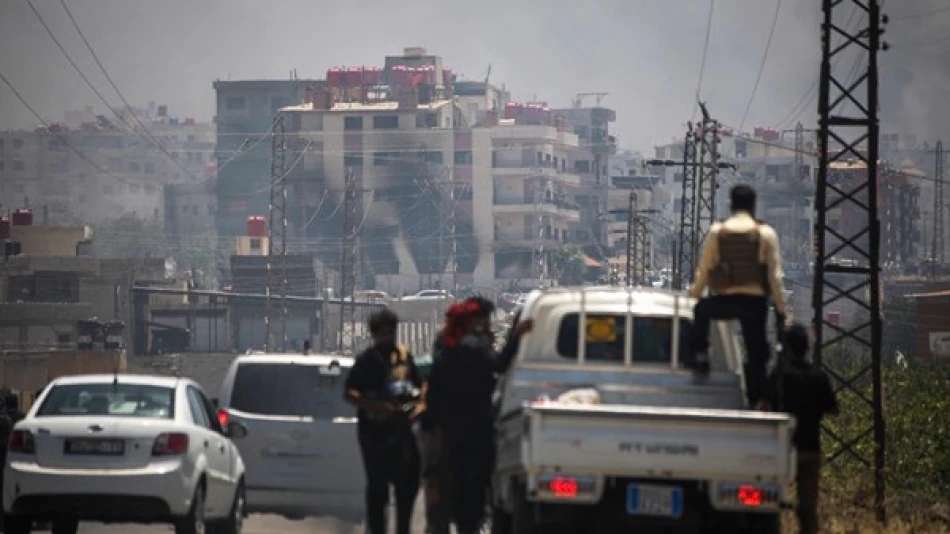
Clashes Erupt in Sweida Despite Ceasefire Announcement
Syria's New Leadership Faces First Major Test as Deadly Clashes Rock Druze Heartland
President Ahmed al-Sharaa's nascent Syrian government confronts its first critical challenge as sectarian violence in Sweida province defies a presidential ceasefire order, leaving at least 940 dead in a week and displacing 87,000 people. The unprecedented bloodshed in Syria's Druze-majority region threatens to undermine the new administration's authority just as it attempts to establish control over the war-torn nation.
Ceasefire Crumbles Despite Security Deployment
Despite President al-Sharaa's public call for all parties to halt combat operations, intermittent clashes and rocket fire continued to echo through Sweida city and its surroundings on Saturday. Local correspondents reported concentrated fighting in the western districts of Sweida city, while additional skirmishes erupted in the province's northern countryside.
The violence persists even as government security forces began deploying across the province with a mandate to "stop the chaos and protect civilians." This marks one of the first major tests of the new Syrian leadership's ability to project authority beyond Damascus and maintain order in ethnically and religiously diverse regions.
The Druze Factor in Syria's Transition
Sweida province serves as the heartland of Syria's Druze minority, a religious community that has historically maintained a delicate balance between autonomy and cooperation with Damascus. The current violence between local groups and tribal militants reflects deeper tensions about minority rights and protection under Syria's new political order.
Historical Context of Druze Autonomy
The Druze community has long operated with significant self-governance in southern Syria, similar to how Kurdish groups control northeastern regions. This latest crisis tests whether al-Sharaa's government can accommodate such autonomy while maintaining territorial integrity—a challenge that has plagued Middle Eastern transitions from Iraq to Lebanon.
Displacement Crisis Compounds Regional Instability
The UN's count of 87,000 internally displaced persons within Sweida and neighboring Daraa province represents a significant humanitarian challenge for the new government. This displacement occurs as Syria already hosts millions of internally displaced people from over a decade of civil war.
The spillover into Daraa province is particularly concerning, as this region has experienced its own periodic unrest and represents another test case for Damascus's ability to maintain stability in former opposition strongholds.
Presidential Promises Meet Ground Reality
In his televised address to Syrians, President al-Sharaa emphasized the state's commitment to protecting all minorities and communities, promising accountability for violations "regardless of which party committed them." He declared that "no person will escape accountability" and stressed the importance of achieving justice and imposing the rule of law.
However, the gap between these assurances and the continuing violence highlights the fundamental challenge facing Syria's new leadership: translating political promises into effective governance across a fractured nation with deep sectarian divisions.
Implications for Syria's Political Future
The Sweida crisis represents more than localized violence—it serves as a critical indicator of whether Syria's new government can manage the country's complex mosaic of communities. Success in resolving this conflict could establish precedents for handling other minority concerns, while failure might encourage similar challenges elsewhere.
The international community will closely monitor how al-Sharaa's administration handles this crisis, as it may influence future diplomatic recognition and aid decisions. The government's response to minority protection concerns could determine whether Syria's transition leads to stable governance or further fragmentation.
Most Viewed News

 Layla Al Mansoori
Layla Al Mansoori






